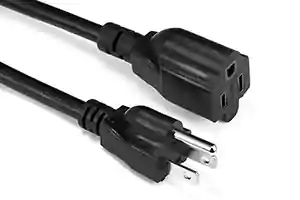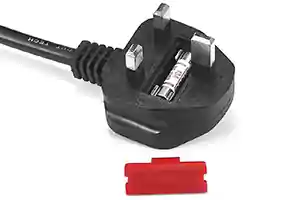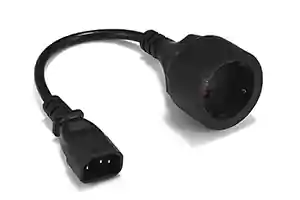The IEC Type G plug is a British three-pin rectangular blade plug with a protective fuse inside to protect cords from high-current circuits. Type G outlets generally include safety switches.
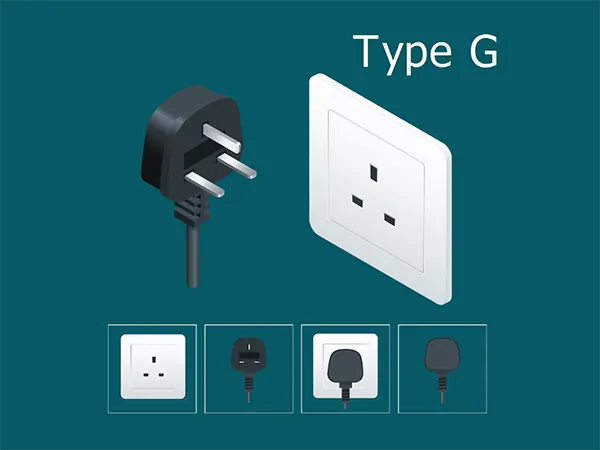
Table of Contents
What is a Type G plug?
This 13 amp Type G plug has three rectangular prongs that form an isosceles triangle. The central earth pin is 4 by 8 mm and 22.7 mm long. Line and neutral pins are 4 by 6.35 mm and 17.7 mm long, on centers spaced 22.2 mm apart. The center-to-center distance between the earth pin and the middle of the imaginary line connecting the two power pins is 22.2 mm. The 9-mm long insulated sleeves prevent accidental contact with a bare connector while partially insert the power plug.
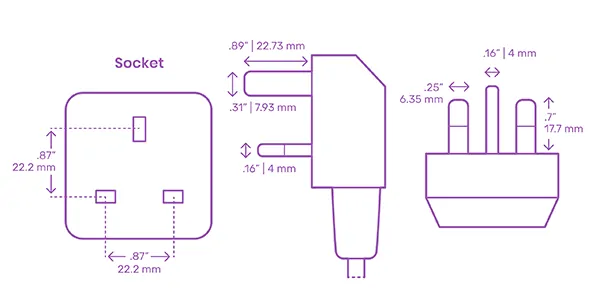
UK Type G plug features
British Standard BS 1363 requires a three-wire grounded and fused UK Type G plug for all connections to the power mains. Two-wire class II appliances are not earthed and often have a plastic grounding pin which only serves to open the shutters of the electrical outlet.
The lack of an earth pin on a type C plug makes connecting it to a type G receptacle. However, it can actually be forced into the socket by sticking a pointy object into the center hole of the power outlet, which opens up the two other holes. To be clear, this is not a piece of advice; it’s simply an observation…
Where is the Type G plug used?
In the UK, the power sockets in a house are connected by means of ring circuits, which are protected by 32 A circuit breakers. This type of wiring is rarely used outside the UK and requires fused plugs. Like mobile phone chargers, small appliances usually have a 3 A cartridge fuse inside the plug; heavy-duty appliances, such as coffee makers, have a power plug with a 13 amp cartridge fuse.
Almost everywhere else in the world, radial circuits are used. In this system, each wall socket, or group of sockets, has a circuit breaker at the main switchboard, so there is no need for plugs to be fused. As a result, if you take some foreign appliance to the UK, you can use an adaptor, but technically it must incorporate the correct value fuse. For example, most would have 13 amps, one too big for computers.
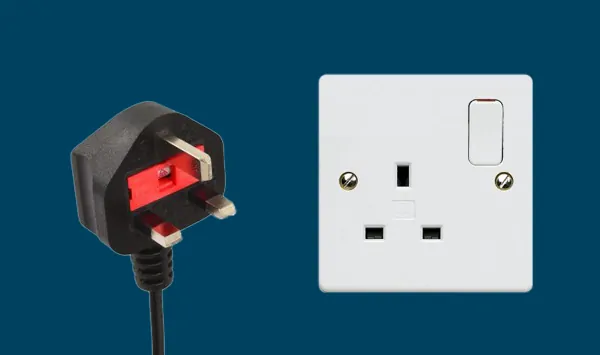
Type G plugs and sockets started appearing in 1946, and the standard was first published in 1947. By the end of the 1950s, it had replaced the earlier type D outlets (BS 546) in new installations in the UK, and by the end of the 1960s, most earlier installations had been rewired to the new standard. Type G wall sockets almost always include switches for extra safety.
What does a Type G plug look like?
UK Type G plugs are undoubtedly among the safest in the world and among the most hulking and cumbersome. That’s why people often make fun of them, saying that a British plug is mostly bigger than the appliance it is connected to… Moreover, the bottom-heavy design of the plug makes it a perfect caltrop.

What countries use a Type G plug?
Type G plug is mainly used in the United Kingdom, Ireland, Cyprus, Malta, Malaysia, Singapore, Hong Kong, and the Arabian Peninsula. (Check the complete list of all countries that use type G plug)
Used in countries:
| Plug Standard | BS 1363, BS 1363A, Fused Type G Plug |
| BS 1362, 3 Amp, 5 Amp, 10 Amp, 13 Amp Fuse Options | |
| Connector Standards | IEC 60320 (320) C-13, C-13 Locking, C-19, C-19 Locking, C-5, C-7, C-15, Unterminated |
| Cordage Standards | H05VV-F3G, H03VV-F3G, H03VV-H2, H05VV-H2, H05VV-F2, CENELEC HD-21 (HAR) |
| Conductor Size / Rating | 0.75 mm @ 6 Ampere, 1.0 mm @ 10 Ampere, 1.5mm @ 16 Ampere |
| Material | PVC, Jacket Color Black, Temperature 70C |
| Conductor Color Code | Brown, Blue, Green/Yellow (3 wire); Brown, Blue (2 wire) |
| Jacket O.D. (Approx.) | 6.4 mm = 3 x 0.75 mm, 7.2 mm = 3 x 1.0mm, 8.3 mm = 3 x 1.5 mm |
| Substances Compliance | REACH, RoHS Compliant |
Type G plug certificate
Organization: ASTA
The British Standards Institution (BSI) was the world’s first national standards body and continues to be a leading global standards maker. BSI is also the UK’s National Standards Body, representing UK interests worldwide. The BSI Kitemark is a voluntary certification mark, globally recognized as a symbol of trust, showing that a product or service meets applicable and appropriate British, European, International, and other quality, safety, performance, and trust standards.
We have made a very detailed graphic introduction in the article safety marks for more information about the safety certification of power cord plugs.
Now It’s Your Turn
So that’s how I understand Type G plug and socket.
Now I want to turn it over to you: Through my article, do you understand Type G Plugs and Sockets (Outlets)?
Do you have a different point of view with the power plug type G? Or any other questions?
Let me know by leaving a quick comment below right now.
